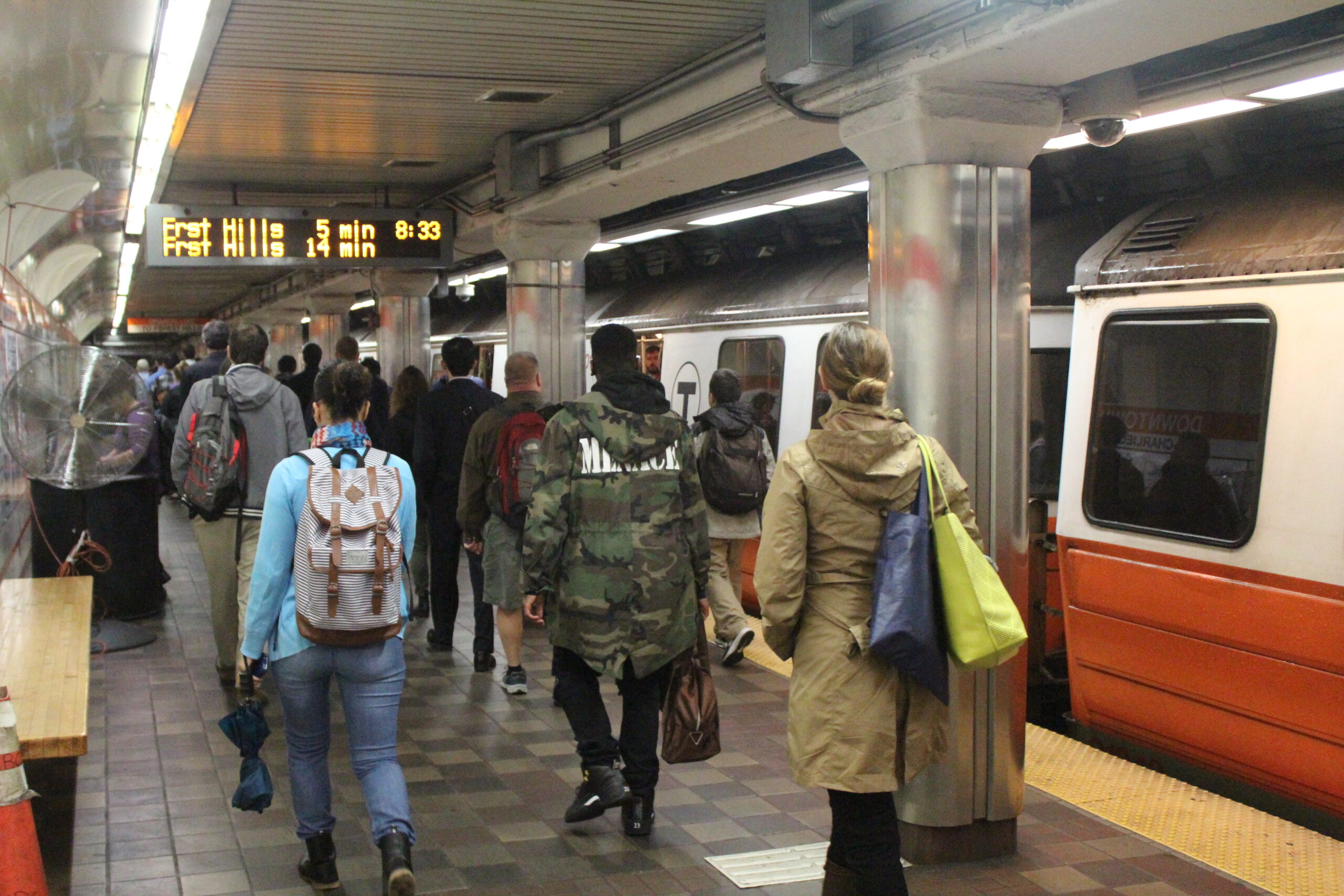
Passengers are seen leaving a Boston Massachusetts Bay Transportation Authority Orange Line platform. Today, the MBTA received further directives from the Federal Transit Administration regarding additional safety measures to be implemented by the commuter railroad. The MBTA has suffered a number of safety related incidents in recent months that have drawn attention from federal regulators. (Bob Johnston)
WASHINGTON – The U.S. Department of Transportation’s Federal Transit Administration today called for safety changes at the Massachusetts Bay Transportation Authority that are in addition to directives made to MBTA in June [see “Federal directives order MBTA to address safety issues,” News Wire, June 15, 2022].
In what are called Special Directives to the Massachusetts Department of Public Utilities (DPU), which oversees MBTA, the transit agency will require MBTA to address “personnel, deficiencies and inadequate operating conditions, policies, procedures, and training that compromised a culture of safety at the agency.”
FTA also gave DPU an additional Special Directive requiring DPU to improve its safety oversight of MBTA. A Special Directive requires an FTA-regulated transit agency or oversight agency to take immediate action on safety issues within a specific period.
The move follows an FTA order issued in July requiring an “immediate safety stand-down” for workers dealing with out-of-service trains following a series of runaway-train incidents [see “FTA orders ‘safety standdown’ for MBTA over runaway trains,” News Wire, Aug. 1, 2022]. In the latest incident, on July 25, a Red Line train rolled out of a yard in Braintree, Mass., and onto station tracks, resulting in 30-minute delays stretched out over four hours.
That stand-down order required all MBTA employees to receive a safety briefing before moving equipment in yards or shops. The agency said unsafe practices at MBTA created “a substantial risk of death or personal injury.”
“Transit riders shouldn’t have to question whether they will get to their destinations safely,” said FTA Deputy Administrator Veronica Vanterpool. “Safety is FTA’s top priority, and our role is to hold transit agencies and state safety oversight agencies accountable on behalf of transit riders and workers.”
The Special Directives require the MBTA, its board of directors, and the DPU to set safety priorities for MBTA’s riders and workforce. “FTA … will continue meeting with MBTA and DPU to review progress, until such time as FTA determines these meetings are no longer necessary or may be conducted with less frequency,” the agency stated in a press release.














Sloppy writing maybe on the part of TRAINS–whose writing is usually good. But as I read the media reports on this story I do wonder how much barking up the wrong tree there is. The capital budget is favored over the operating budget, extensions over track & platform maintenance basically. That 500 million figure is about the total for the Greenbush Line which [long story] Mass. wound up having to pay for 100% and that commuter rail line cost about that to rebuild. As for commuter rail having lived on the Southern Div. (NH Route, Lowell Line) for 15 years I am seeing the installation of my FOURTH signal system at West Medford. Well over $100 million spent on PTC signalling for the commuter rail system–that’s where part the money went. Now how much of that federal mandate was paid for by the Feds I don’t know. The MBTA is short of crews–but they always did rely on men’s wanted to do overtime for staffing and that methodology may be haunting them now–no I NOT going to become a driver!
The MBTA’s passengers do bear a little bit of the blame–I wouldn’t consider them the brightest of the lot! The guy who went around barriers to use a rusted out bridge and got killed falling through wins a Darwin award! Gotta go
Really? Safety priorities for the riders…shouldn’t that be the riders responsibility, or are we going to completely absolve people from PERSONAL RESPONSIBILITY for their own safety now?
I think you interpreted that completely the wrong way.
I don’t think the riders have a great deal of input into whether an empty train rolls away onto an active track.